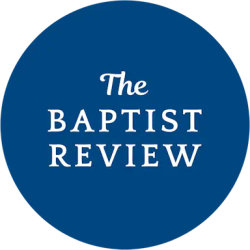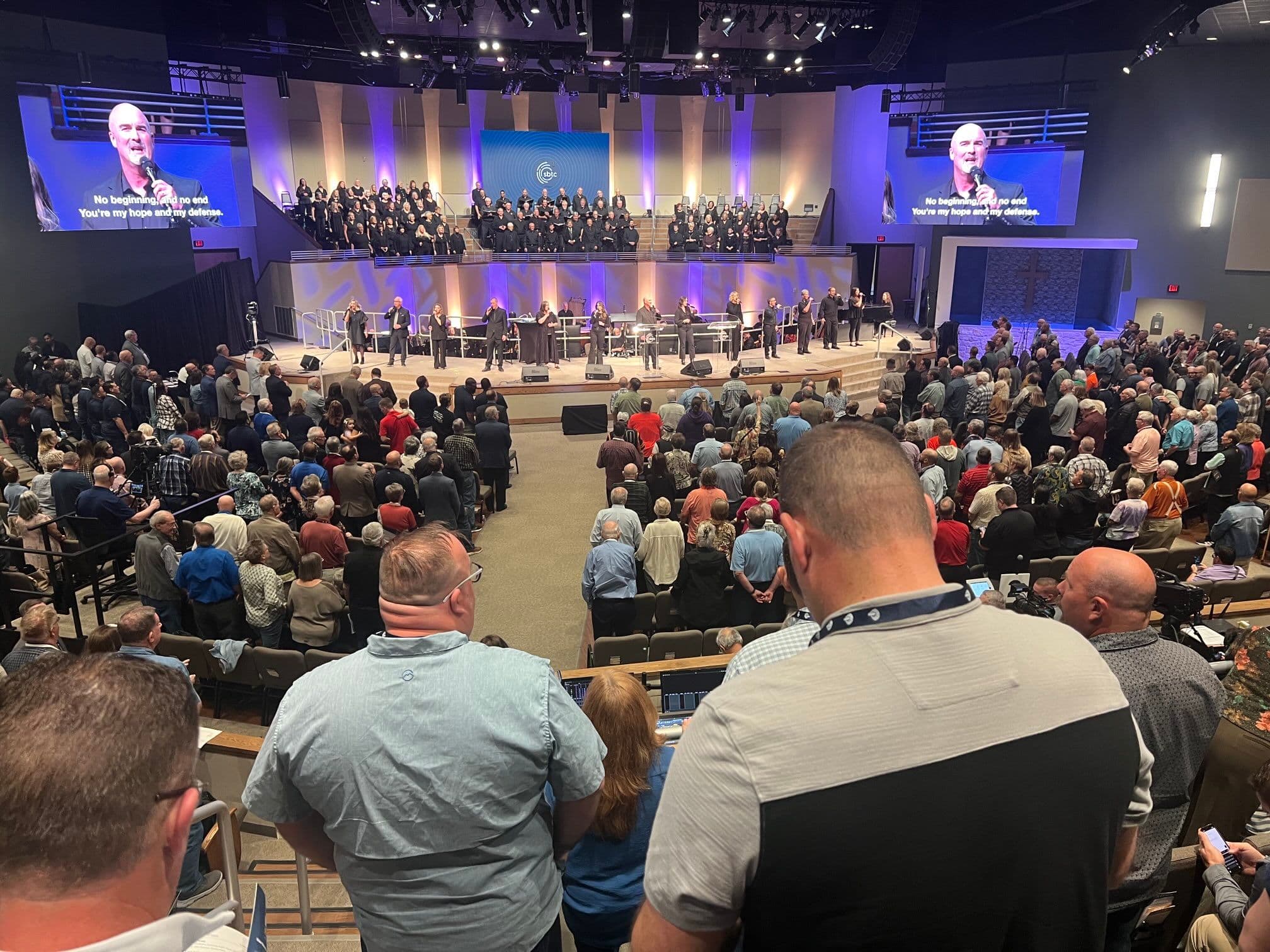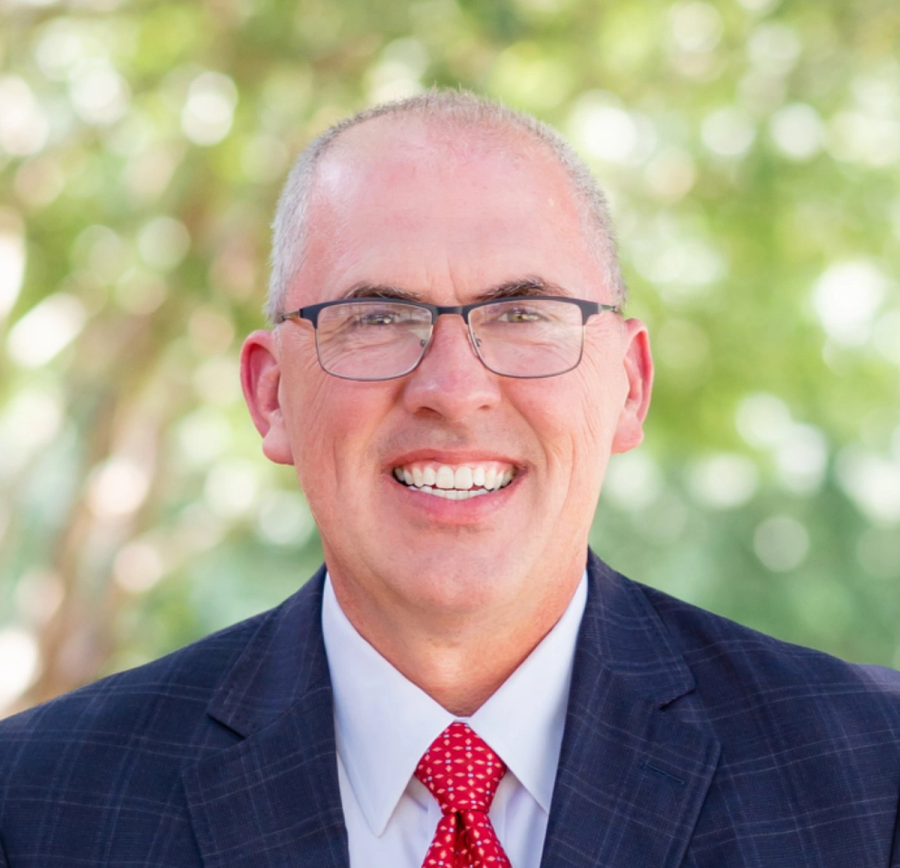The Southern Baptists of Texas Convention met in Lubbock, Texas, for their Annual Meeting on October 27-28, 2025. Some of the messengers present at that meeting attempted, through three different motions that they made, to prevent Fielder Church in Arlington, Texas, from seating messengers at the meeting. The chair ruled all three motions out of order.
I was present at the meeting. I listened carefully to every word of the rulings. I am familiar with the SBTC’s governing documents. Much of the online conversation about the meeting and about these rulings has been inaccurate, whether as a result of genuine confusion or of deliberate misrepresentation. Here are the facts of the matter, and I hope that spelling them out will help Southern Baptists and others who may be watching from outside our family of churches to gain greater understanding of what has happened.
This Is a Post-Law-Amendment-Passage Chain of Events
Unlike the Southern Baptist Convention, the Southern Baptists of Texas Convention actually did adopt this state’s version of “the Law Amendment.” It is presently in force at the SBTC and was applied to this particular case.
Unlike what you may have read online, this is not “what happens when you don’t adopt the Law Amendment”; this is what happens when you do adopt it—or adopt something like it. The SBTC’s Law-Amendment-like motion failed to resolve this problem.
When the Law Amendment equivalent went into force at the SBTC, Fielder Church responded by retitling everyone on the church’s staff who had previous borne the title “Pastor” by replacing that word with the title “Shepherd. ” One of my critiques of the Law Amendment, made numerous times, was that the wording of the Amendment was vague, would not bring any more clarity to the Convention than the SBC’s present governing documents provide, and would not accomplish what its supporters thought it would accomplish. The results at the SBTC certainly show that concern not to have been a baseless one.
When the SBTC’s Credentials Committee met earlier this year to consider Fielder Church’s staff composition, they found the word “Pastor” nowhere. The wording of the adopted motion was plain and was plainly centered on the title “Pastor. ” The committee had no choice but to rule as they did. They found that Fielder Church was not in violation of the SBTC’s standards for friendly cooperation (“affiliation”).
Bodies are governed by the words we adopt, not by the intentions we had when we adopted them.
It is likely gratuitous at this point for me to offer my opinion about what should be the fate of Fielder Church. The messengers will eventually decide, for what happened this week was a delay, not a final disposition of the matter. Since the messengers will decide, my opinion is of little importance.
With that having been said, I will nonetheless offer my opinion. Although I have grown fond of Jason Paredes, whom I did not know before his church became involved in this question back during my first year as SBC president, his job-title-changing response at Fielder Church troubles me. Fielder is an autonomous church, They didn’t ask my opinion, nor were they under any obligation to do so. And yet, every SBTC church, equally autonomous, has the right to consider Fielder Church’s response and decide what it means.
I think it is striking that Fielder Church changed not only the titles of the women in various positions in children’s ministry and group administration but also the titles of Jason himself and his entire pastoral team. Fielder seems to be communicating that they actually do regard all of their “Shepherds” to be the same thing—a pastor/shepherd. That’s troubling and is contrary to the plain language of The Baptist Faith & Message if true.
Second, Fielder Church’s action feels like gamesmanship rather than earnest dialogue about what are important theological matters. The messengers of the SBTC overwhelmingly adopted language (albeit imperfect language) expressing their convictions about the office of pastor. The Credentials Committee, constrained as they are by the convention’s governing documents, have no choice but to respect technicalities such as the use of “shepherd” rather than “pastor.” Fielder Church was in no such way constrained. They did not have to invoke technicalities; they could have interacted with the clear intention of SBTC messengers in good faith. Their having chosen another path bodes poorly for them when this matter finally comes to the messengers’ ballots, I think.
And yet, time remains for that good-faith dialogue to take place. Ever the optimist, I choose to be hopeful and to pray for a good outcome.
The Trustworthy Process at the SBC Is Different from the SBTC Process
The Southern Baptists of Texas Convention is governed by its own governing documents. The Southern Baptist Convention is governed by its own governing documents. They are separate corporations. They are each sovereign in its own sphere. Strangely enough, there seems to be considerable confusion about this on Twitter.
The differences between the SBC’s governing documents on the one hand and the SBTC’s governing documents on the other hand played a significant role in the events that transpired in Lubbock this week. There are three parts of the SBTC’s Constitution that President Danny Forshee mentioned in his various rulings.
The first Constitutional provision that came into play was the simple statement that an affiliated church is entitled to ten messengers. Fielder Church is an affiliated church. Indeed, the very motions that were brought this week tacitly acknowledged that. The motions were brought because Fielder Church is an affiliated church—and were brought to disaffiliate an affiliated church. The only way that a church is not entitled to seat messengers is if the church is not affiliated with the SBTC.
The second Constitutional provision was a provision by which any messenger can raise a question about the seating of the messengers of a church. The provision sets forth various procedures that the committee and the Convention must follow in order to make a suitable determination of what to do.
Here’s where the differences between the governing documents of the SBC and the SBTC become very important. The SBC’s Bylaws explicitly state that the convention may seat messengers provisionally pending action on any challenge. The SBTC’s Constitution lacks any such provision. Once messengers are seated at an SBTC meeting, they have been seated irrevocably. The messengers may take actions at the meeting that would prevent that church from seating messengers the next year, but there is no language in the governing documents of the SBTC allowing for the provisional seating of messengers pending further review.
Third, the SBTC’s Constitution requires that the SBTC provide advance written notice to any church who is subject to disaffiliation at any Annual Meeting. This is different from the SBC. The SBC’s relevant bylaw places the notification burden upon the church, not upon the Convention. If the Executive Committee of the Southern Baptist Convention declares a church not to be in friendly cooperation, the church must notify the Credentials Committee at least thirty days prior to the Annual Meeting of the church’s intention to appeal the decision. In contrast the SBTC’s Constitution places the burden of notification upon the Convention. The SBTC cannot hold a vote to disaffiliate a church unless it has sent written prior notice of the vote to the church in question.
It was this provision that prevented the SBTC from considering the various motions it received this week. The physical laws of the universe made it impossible for the SBTC to accomplish the constitutional requirement of providing notice to Fielder Church.
This was explained clearly and carefully by President Forshee as he made his rulings. There is really no excuse for anyone who was present at the meeting and listening to the rulings not to have understood this or not to have included these facts in any statement they may have made online about what happened this week.
President Forshee also went out of his way to mention to the makers of these motions that a periodic review of the SBTC’s governing documents is presently underway. He graciously invited them to contact the chair of that committee and to mention any changes they think the committee should make to the verbiage that governs this process.
In my opinion, the SBTC’s governing documents are flawed at this point, although inadvertently so. The unintended state of the SBTC’s governing documents renders it impossible for the messengers to disaffiliate with churches during an Annual Meeting for any cause. This is an untenable situation. I am confident that the committee presently impaneled will untie this Gordian Knot with their recommended revisions at next year’s gathering.
And so, when people talk about “trusting the process” in their comparisons between the SBTC’s actions this week and the SBC’s multi-year rejection of the Law Amendment, whether by oversight, ignorance, or disingenuousness, they are erroneously treating two totally different “processes” as though they were one. The SBC’s processes for declaring churches not to be in friendly cooperation have been exercised multiple times, each time successfully. They are trustworthy. They have been proven. The processes in use this week at the SBTC were not, in point of fact, the same processes. They are broken. I predict that they will be repaired.
But the larger point I tried to make over the past few years is all the more vindicated: the importance of process. In one case (the SBTC), we see what happens when a convention adopts a Law-Amendment-esque provision and that theological declaration encounters a process that is fraught with problems. In such cases, the flaws in the process defeat the content of the theological declaration.
In the other case (the various churches challenged at the SBC meetings), we see what happens when a good process tries to operate without the benefit of anything like the Law Amendment. In such cases, the strength of the process demonstrates that it has no real need of the theological declaration (since it is merely a restatement of what The Baptist Faith & Message already clearly says). Where the messengers are free to act, they necessarily act in accordance with their theological convictions.
I never was about trusting the process. I was always about trusting the messengers. I do not trust processes that keep the messengers at arm’s length from decision making. I absolutely do trust processes that empower the messengers to decide.
The Three Motions and Their Dispositions
The first motion to come before the SBTC was a motion to amend the seating of the messengers by refusing to seat the messengers from Fielder Church. This motion was ruled out of order because it conflicted with the Constitution. Fielder Church is an affiliated church. The church is therefore entitled to as many as ten messengers. The Convention could not refuse to seat the messengers sent by any affiliated church without violating the SBTC’s Constitution.
The second motion was a motion to suspend the rules and allow the unseating of Fielder Church’s messengers. This motion was also rightly ruled out of order. I could state why in a simple sentence, but since this is a matter of widespread confusion, I’m going to take a little more time here.
When one of our conventions holds a meeting, we follow three different kinds of rules…OK, actually four.
1. Rules contained in our Constitutions and our Bylaws.
2. Rules spelled out in Robert’s Rules of Order (or whatever else may be the rules of parliamentary procedure that the body has adopted)
a. Some of these rules are foundational rules of parliamentary procedure or are rules put in place to protect the fundamental rights of messengers. The rule that says that every messenger can cast a vote is an example of such a rule.
b. Other rules are the rules of parliamentary procedure that do not affect the fundamental rights of messengers. The rule that says you cannot introduce a new motion while another motion is on the floor is an example of such a rule.
3. “Standing Rules” that we adopt (e.g., 3-minute-per-speaker time limits).
Rules in category 1 cannot be suspended. Rules in category 2.a. cannot be suspended. Rules in category 2.b. and rules in category 3 can generally be suspended, although the procedure may vary case by case.
Sometimes, knowing that such a thing as a motion to “suspend the rules” exists, people assume that they can suspend any rule. As you can see, that simply is not true. Not even a unanimous vote of the messengers can suspend, for example, a notice requirement in the Constitution.
But the motion to suspend the rules that these messengers offered at the SBTC Annual Meeting this week was precisely that: a motion to suspend a rule that guaranteed prior written notice to any church subject to disaffiliation at an SBTC Annual Meeting. The motion was ruled to be out of order, and there was never any other possible outcome.
This is not a close case. This is not a judgment call. All three motions were out of order by a mile.
The third motion, as I recall it (and I’m doing all of this from memory) was a motion to ask the Credentials Committee to disaffiliate Fielder Church. Again, it was not possible to meet the notice requirement. President Forshee, unable to do otherwise, ruled the motion out of order.
These rulings are no reflection of the SBTC’s convictions about complementarianism, about the truth of the Bible, about the role of The Baptist Faith & Message, or of the SBTC’s willingness to take hard stands when necessary. These rulings were a reflection of one thing, and one thing only:
These rulings simply revealed that the SBTC follows its governing documents.
A Closing Appeal
The national SBC’s process in Bylaw 8 works better than the governing documents of the SBTC have worked this week, but even the SBC’s process has some troubling dead ends along some of its pathways. The Cooperation Group met over the course of a year and made several recommendations relevant to these matters. Those recommendations, although forwarded by the messengers to the Executive Committee, made it no further than that. Specifically, recommendation two of the Cooperation Group asked for changes to Bylaw 8 at the national SBC level that would ensure that the messengers retain control of the process in all of its iterations.
Neither fiery enough to hold the attention span of the warmongers nor pliable enough to gain the support of those who are uncomfortable with letting the SBC take a firm and unwavering stand on the side of complementarianism, recommendation two is unhappily forgotten by now. Those who worked on it know that the SBC is eventually going to take the wrong turn in Bylaw 8 and run into one of those “dead ends” in the future.
Rather than relitigate the Law Amendment until Jesus comes back, I would appeal to those who are genuinely concerned to take another look at the Cooperation Group’s Recommendation Two.
Editor's Note: As a part of its commitment to fostering conversation within the Southern Baptist Convention, the Baptist Review may publish editorials that espouse viewpoints that are not necessarily shared by the TBR team or other contributors. We welcome submissions for responses and rebuttals to any editorials as we seek to host meaningful conversations about the present and future of our convention.


